- Design Approaches
- Posted
'E'volution
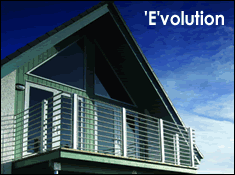
JC: Although Interhabs have a track record internationally, and have long been building homes in the United Kingdom, are there any projects in the pipeline yet in Ireland?
RL: Indeed there are. Interhabs have gained access to land at Aughleam, Belmullet, County Mayo , with a view to potentially building a number of houses, in what I believe to be the most beautiful part of Ireland . We are currently in planning for ten houses, between 1,600 and 1,800 Ft 2, three house types, all carefully located with southern elevations to maximise the light and heat retention. The houses have been particularly sighted to make the most of solar gains.
JC: Why did you choose Aughleem?
RL: It has the most beautiful scenery imaginable, including panoramic views of the Atlantic ocean . It's a beautiful place to live. The interiors of an Interhabs house are a sight to behold in themselves, and the views, from the extensive glazing used in the Canadian timber frame housing concept, lend themselves to such a sight.
JC: Given that Interhabs is a Canadian system, what as your reason for bringing it to the Irish market?
RL: I got involved in Interhabs for the simple reason that I saw the cathedral ceilings, open stairs, timber flooring and so on, of a different quality than was available here. I thought this was super, and when I learnt of the energy efficiency aspect of this sytem, it literally pushed me over the edge, and I thought this was something I had to get involved in.
JC: Interhabs clearly has big ambitions to enter the Irish housing market. What is it about the current climate that justifies these ambitions?
RL: Well the market is lending itself towards our ambitions, because people are earning more money than they have in the past, and because of their education and their status they are demanding more exacting standards in building. They don't like long delays in the building process, they are not accepting draughty, open type windows, and they are looking for a good quality finish, using the right materials.
Luckily, from an Interhabs point of view, current and forthcoming legislation which calls for energy-efficiency, is driving people towards the type of building we offer, because of increasing fuel costs, and a growing awareness that we should use less fuel, whilst still achieving better comfort levels. EU driven legislation, and the likes of the Kyoto protocol, are taking hold, and making people more aware of just how easy it is to properly heat and maintain houses.
JC: With the advent of the EU Directive on the Energy Performance of Buildings leading to energy ratings for virtually all buildings at point of transaction, how do you think Interhabs' buildings will fare?
RL: Very favourably, seeing that thermal performance testing is an integral part of the Interhabs approach. The whole reasoning behind Interhabs is derived from all of the testing that's been carried out in Canada over the last thirty years, resulting a number of years ago in the Super E Programme, which Interhabs works to as standard. The drive towards energy efficiency across Europe is now catching up with market leaders such as Canada and Denmark , who have been actively involved in air tightness testing and in geothermal, solar and other technologies which we're now seeing in Ireland
.

JC: What are the benefits from a developer’s point of view?
RL: Client satisfaction is one major benefit. Clients are becoming more and more discerning in terms of what they want for their money, and from a developers point of view, people are beginning to look for developers whose projects reflect a knowledge of the recent and imminent increases in thermal performance requirements, and understand that in five to ten years time you may not be able to sell a house as easily as has been the case in the last twenty years.
There are all sorts of other benefits for developers, in terms of reducing time on site, and quality control, for instance. The actual development can arrive in containerised fashion from a controlled manufacturing environment, and can be literally weather proofed within two and a half to three weeks. This means that the internal works can go ahead without being subject to weather, which is hugely beneficial in the west of Ireland, for instance. Additionally, the internal timbers will be proofed in a much shorter time period, the house dries out quicker, and is not subjected to rain, wind and all sorts of factors which normally have a damaging effect on houses.
JC: Is there a specific segment of the housing market you’re particularly aiming for?
RL: In line with the Interhabs concept, we are working closely with planners and developers nationally, on what best quality housing should be. And, from a planning point of view, that is low-density clusters, with houses of reasonable sizes within reasonably sized acreage. The houses are integrated into the site design, which has benefits for clients, and in terms of maintenance costs.
We do focus on low-density clusters, and Interhabs will not be entering into high-density projects of three hundred plus houses per development. I think the market is driving towards better quality, lower density type housing.
JC: How much freedom is there from a design point of view with Interhabs homes?
RL: There is a whole range of possibilities, especially early in the design stage. Interhabs people typically work with architects and designers, or if a discerning client wants to work with the Interhabs architects, we offer a full architectural technician service. A lot of people have their own sites, and want to integrate some of their own ideas, and the Interhabs approach to design creates an internal look and feel that is helping people to decide to build Interhabs homes.
JC: Do interhabs offer a full solution in terms of the building’s total energy requirements?
RL: Absolutely. We offer a whole range of options in terms of energy saving measures. In developments over the last number of weeks, we’re showing that geothermal does not have to be connected with underfloor heating. There are high quality options emerging on the Irish market, such as a Canadian system we’re looking at which has been tried and tested within the Canadian programme, which can be coupled with radiators instead. We also give the option of condensing gas boilers, district heating schemes, solar panels—as solar has been coming on leaps and bounds, and we’re also likely in the future to offer micro CHP systems.
Aside from these optional technologies, because our windows are triple glazed, to the highest standards, and because of attention to air tightness, this automatically means that the running cost of an Interhabs home is greatly reduced.
Additionally, from a lighting point of view, the new Megaman range is just making a nonsense of the current practice of purchasing cheap but incurring expensive running costs. It means that if you buy wisely, you can reduce the running costs of a typical bulb from €20-30 per year to €4-5. So whatever lighting you require doesn’t have to cost you the earth, and doesn’t cost the earth either, due to the reduction in CO2 emissions.
People must remember, for every kilowatt hour of electricity used, nearly a kilogram of CO2 is created. This is an important issue, as the Kyoto Protocol and various pieces of legislation designed to curb emissions levels demonstrate.
JC: What incentives are there for companies who might be interested in partnerships with interhabs?
RL: The Interhabs concept is set to grow, and we are basing its prospects on the people who are willing to learn about the technologies and mechanisms to build properly. There’s one overriding factor attached to Interhabs. In order to correctly build an Interhabs home, it involves great care and attention on behalf of the client. We offer full training in this regard, including full training for builders who wish to go that route.
Everything to do with the Interhabs scheme aspires to maximum sustainability, in terms of longevity of the home, at the best possible cost, resulting in real long term savings. By nature, our houses tend to sell for better premiums, because of the healthy, comfortable look and feel.
JC: How do Interhabs buildings perform in terms of health and comfort?
RL: They perform very well, because they’re not draughty, and don’t allow superfluous air infiltration. We use heat recovery ventilation systems as an integral part of the building. This is crucial, as thermal performance must not come at the expense of fresh air. All windows are openable, so on sunny days you can supplement the air quality with fresh unheated air, but on a wet, damp, windy day, our homes offer a warm comfortable interior environment.
JC: You’ve already submitted planning on a ten house development in Aughleem, County Mayo. How are the local authority responding to your proposals?
RL: We have found Mayo County Council to be very open minded. Interhabs policy is to have multiple pre planning meetings, to consult with the planners, who are an integral part of what we’re trying to achieve. Mayo County Council have listened to all of our submissions. The planners we’ve been dealing with have been very knowledgeable.
Dwayne Higgins, Architectural Technologist on the development at Aughleem, Black Sod Bay, Belmullet, describes his experience of the Interhabs system:
“An opportunity to develop sustainable ideas and technology in building projects such as the Belmullet cluster are rare.
“This development was an ideal project, as the dwelling types are traditional in appearance but have the added energy efficiency associated with good passive design and super insulation. In design terms we had to marry the Canadian Interhabs assembly system with traditional proportions of Irish design and the result was a simple external building appearance with a modern and spacious internal plan. The range of exposed timbers used in the overall structure lends an airy and natural feel to these homes. We are hopeful that each building will have a Heat Energy Rating of between approximately 70-80kWh/sqm/yr. We are working closely with Sustainable Energy Ireland to quantify the Canadian ‘Super E’ system and to develop each home under the ‘House of Tomorrow’ programme."
- Dwayne Higgins B.Sc Arch Tech, Dip Eng (Civil) AMIEI
Architectural Technologist
Related items
-
Energising Efficiency
-
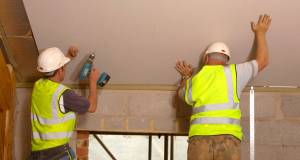 Major new grants for retrofit & insulation announced
Major new grants for retrofit & insulation announced -
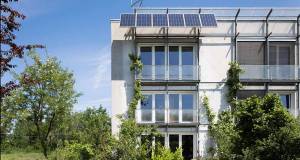 International passive house conference kicks off
International passive house conference kicks off -
 Grant launches online learning academy
Grant launches online learning academy -
 We can launch a new eco renaissance
We can launch a new eco renaissance -
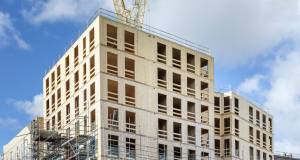 Towards greener homes — the role of green finance
Towards greener homes — the role of green finance -
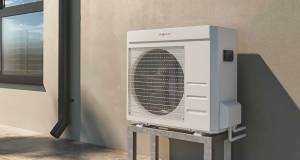 Viessmann launches new compact heat pump
Viessmann launches new compact heat pump -
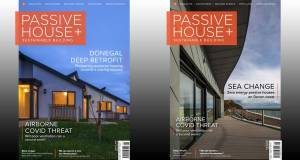 New issue of Passive House Plus free to read
New issue of Passive House Plus free to read -
 Saint Gobain launches online technical academy
Saint Gobain launches online technical academy -
 SEAI Energy Awards 2020 open for entries
SEAI Energy Awards 2020 open for entries -
 An Post to enter retrofit market
An Post to enter retrofit market -
 The first oil crisis
The first oil crisis

